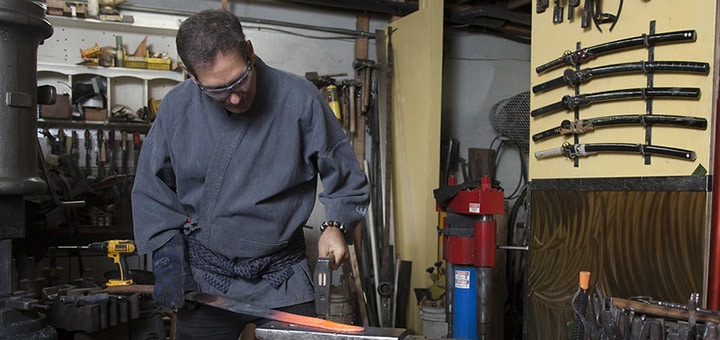
You surely already stumbled upon the different types of sword steels. Steel numbers such as 1045, 1095, 5166, 9260 significantly change the properties of the blade. Therefore, it is important to know the advantages and disadvantages of the various sword steels.
However, the steel type is not the only important factor for creating a good sword. A proper heat-treated blade is far more superior to one with bad heat-treatment, even if way better steel was used. At first, we will dive deeper into the heat treatment of swords.
Table of Contents
Sword Tempering
In the sword forging process heat treatment is one of the last steps required to finish the sword. Tempering swords is the most important part of making a fully functional, battle-ready sword. The heat-treatment process makes the sword harder. Furthermore, it gives the sword a little more flexibility, so it bends rather than breaks.
Tempering a sword requires a lot of heat. The exact temperature depends on the desired result and the steel used. When the sword reaches the looked-for temper, it is rapidly quenched into water or oil to cool the blade. This way you will end up with a harder sword.
There are two different types of sword tempering. Either a sword is mono hardened or differentially hardened. Mono hardening is when the entire blade is heated to the same temperature and cooled all at once.
Differentially tempering a sword is done by applying clay to parts of the blade. In this process also called “clay tempering” clay is applied to the spine of the sword. This way the spine of the sword doesn’t heat up as much as the rest of the blade.
When quenching the blade the part not covered in clay cools faster and becomes very hard, while the spine cools slower and remains relatively soft and flexible. Hence the softer spine of the sword absorbs the shock of a cutting blow better and allows the sword to flex instead of breaking.
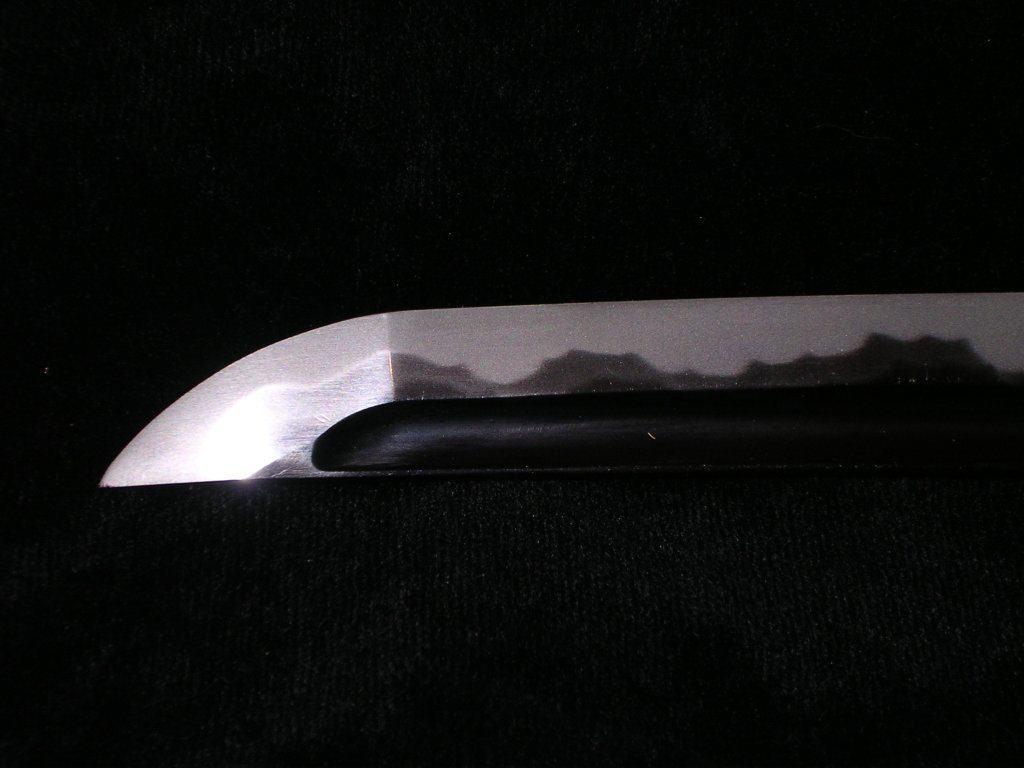
One side-effect of clay tempering is the temper line, often referred to as “hamon line”. This line was produced by the clay tempering and separates the different hardness levels of the steel. Keep in mind that only clay tempered swords have a natural hamon line. Swords that weren’t clay tempered but have a hamon line nonetheless got treated with a special liquid.
Sword Steels
Now let’s move on to the different types of sword steels. Foremost when considering buying battle-ready swords watch out for stainless steel. Those swords merely serve as decoration! As stainless steel has a very high quantity of Chromium the swords break very easy. If the blade is longer than 30 cm (12 in) the grain boundaries between the chromium and the rest of the steel start to weaken, thus creating stress points.
In the following table, you can get a quick overview of the different steel types that will be covered during the course of this article.
| Steel Type | Class | Material Composition |
|---|---|---|
| 1045 | Medium Carbon Steel | C 0.45%, Mn < 1% |
| 1055 | Medium Carbon Steel | C 0.55%, Mn < 1% |
| 1060 | Medium/High Carbon Steel | C 0.60%, Mn < 1% |
| 1075 | High Carbon Steel | C 0.75%, Mn < 1% |
| 1090 | High Carbon Steel | C 0.90%, Mn < 1% |
| 1566 | Spring Steel | C 0.65%, Mn 1-1.15% |
| 5160 | Spring Steel | C 0.60%, Mn 0.95%, Cr 0.80-1.05% |
| 5166 | Spring Steel | C 0.66%, Mn 0.95%, Cr 0.80-1.05% |
| 52100 | Spring Steel | C > 1.00%, Mn 0.4%, Cr 1.45% |
| 9260 | Spring Steel | Si 1.40-2.00%, Mn 0.65-0.85%, Cr 0-0.65% |
| 65Mn | Spring Steel | C 0.7%, Mn 1%, Si 0.17-0.37% |
| T-10 | Tool Steel | C 1%, Mn 0.36%, Si 0.32% |
| L6 BAINITE | Tool Steel | C 0.7%, Mn 0.6%, Cr 1%, Mo < 0.5%, Ni 1.6%, V 0.25% |
| S7 SHOCK STEEL | Tool Steel | C 0.5%, Mn 0.7%, Cr 3%, Mo 1.5%, Si 0.75%, V < 0.35% |
| HWS-1S | Hanwei Steel | No exact info. Hanwei’s own High Alloy Steel |
| HWS-2S | Hanwei Steel | No exact info. Hanwei’s own High Alloy Steel |
Steel numbering system
The most commonly used sword steels are represented by four-digit numbers. The numbering system was created by the Society of Automotive Engineers. Most steels fit into this classification system. There are a few exceptions such as the 65Mn spring steel, tool steels as well as the various custom-made steels.
So now you might ask what these four-digit numbers stand four. Every one of those digits represents a special property of the steel. The first digit indicates the main material. There are a total of nine different main materials:
| 1. Carbon steel | 2. Nickel steel | 3. Nickel-chromium steel |
| 4. Molybdenum steel | 5. Chromium steel | 6. Chromium-vanadium steel |
| 7. Tungsten-chromium steel | 8. Nickel-chromium-molybdenum steel | 9. Silicon-manganese steel |
The most important materials for sword making are type 1, 5 and 9. The second digit of the series indicates the concentration of the major element in percent. The last two digits of the series indicate the carbon concentration to 0.01%.
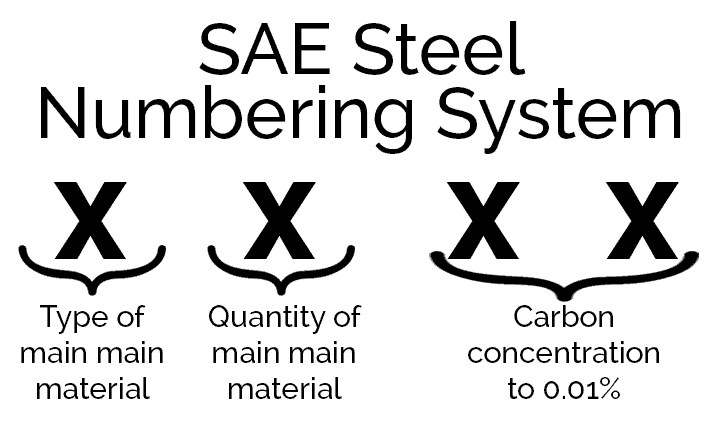
Here is a short example to make sure you fully understand the SAE numbering system. 5166 steel indicates a chromium steel alloy, containing 1% of chromium and 0.66% of carbon. Keep in mind that is always a slight fluctuation range between those numbers.
A functional sword requires a medium to high carbon concentration. Steels with a carbon content between 0.05 to 0.3% are considered low carbon steel, they aren’t suitable for swords, as they can’t be hardened properly.
Medium carbon steels contain 0.3-0.6% of carbon. Forging a good sword requires at least 0.4% carbon. High carbon steels have a carbon content of 0.6%-1%.
As you now know the theory let’s move on to the different sword types and their pros and cons.
(High) Carbon Steels
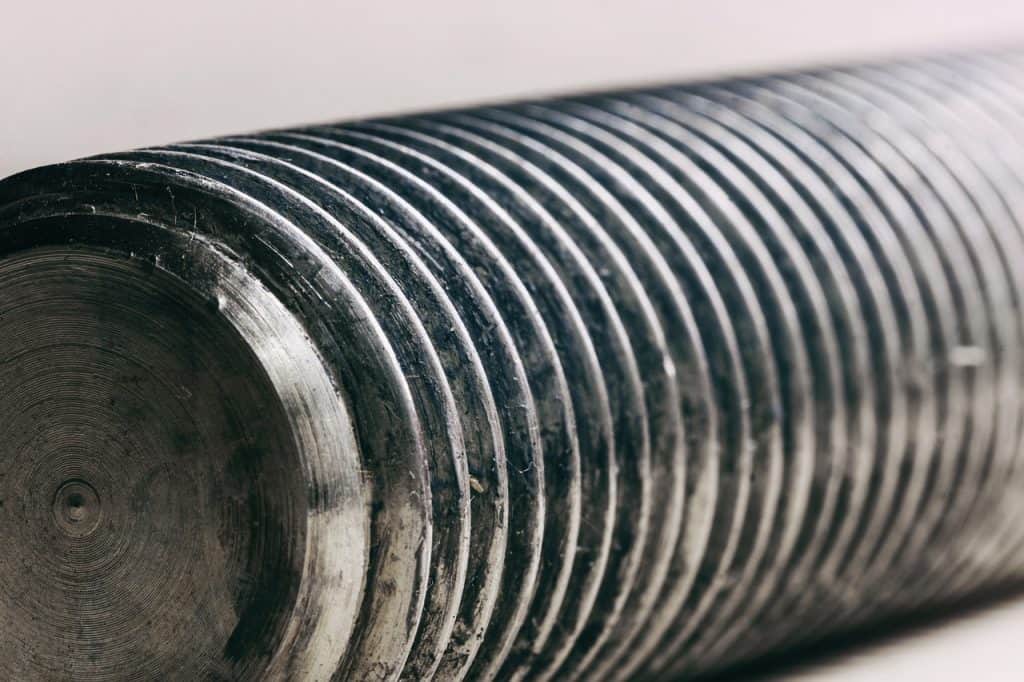
Most functional swords are forged from high carbon steel. Commonly used types are 1045, 1055, 1060, 1075 as well as 1095. The cheapest of those types is 1045. The price increases with higher carbon content. The optimal carbon concentration for a regular sword is between 0.5-0.7%. Most katanas, as well as some medieval swords, are forged from one of those high carbon steels.
1045
As this steel type has a rather low carbon content it is relatively soft and able to take a beating. This steel forms the lowest price segment for battle-ready swords. With proper heat-treatment, these swords can become really tough and may well be worth their price. This metal alloy is also relatively resistant to corrosion.
The main disadvantage of swords forged from this steel type is that they don’t retain an edge as sharp as steels with a higher carbon quantity. A blade forged from this steel probably costs around 100€. Being so inexpensive makes them an optimal choice for beginners.
1055
The 1055 steel alloy designed by the SAE is used in some swords and machetes. The material is often heat-treated to a spring temper to reduce the risk of breaking. It has a carbon content of about 0.55%. This makes the steel tougher than the 1045 variant. However, it becomes also more brittle. Therefore, good heat-treatment becomes more important.
Due to the increased carbon quantity, the blade can take a sharper edge. Furthermore, the metal gives the sword a great impact resistance. The down-side of this steel is that as it is more difficult to forge it is more expensive.
1060
1060 sword steel is commonly used for sword forging. It offers a great compromise between hardness and flexibility. Most katanas get forged from this steel type. The carbon steel is perfect for differential tempering. Thus, a lot of clay tempered katanas are made from 1060 high carbon steel.
Those Japanese swords look great with their visible temper line (hamon), which is only possible, due to the high carbon content of 0.6%. Moreover, the blade is harder and able to take and keep a sharper edge, than the ones we previously discussed. 1060 carbon steel swords have great flexibility as well.
Obviously, 1060 carbon steel swords are very popular. However, it is more expensive than 1045 steel. Whereas 1045 is quite resistant to corrosion the 1060 rusts quicker. This makes proper sword maintenance more important.
In case you need more information on this particular steel type check out my 1060 carbon steel article.

1075
Swords forged from 1075 high carbon steel are very tough. It is very easy to sharpen the blade and it keeps its edge very well. With its high carbon content of 0.75%, it is prone to corrosion.
The blade is not as flexible anymore and may break easier. Consequently, good tempering is a must. Yet this isn’t the end of the spectrum. Let’s continue with the steel containing the highest carbon content.
1095
As this steel type nearly has 1% of carbon it is very hard. These swords require a perfect heat-treatment. This high carbon steel can be quenched to a hardness of HRc66. On the one hand, swords forged from 1095 high carbon steel take and keep an extremely sharp edge. On the other hand, they are more brittle.
Since the durability of the sword is rather low in comparison to the other steels, the 1095 steel type is recommended to advanced swordsmen. The sword is unforgiving if being wielded improperly. Furthermore, sword maintenance becomes extremely important, because of the low corrosion resistance.
If you need more detailed info on this steel make sure to take a look at my 1095 carbon steel guide.
Spring Steels
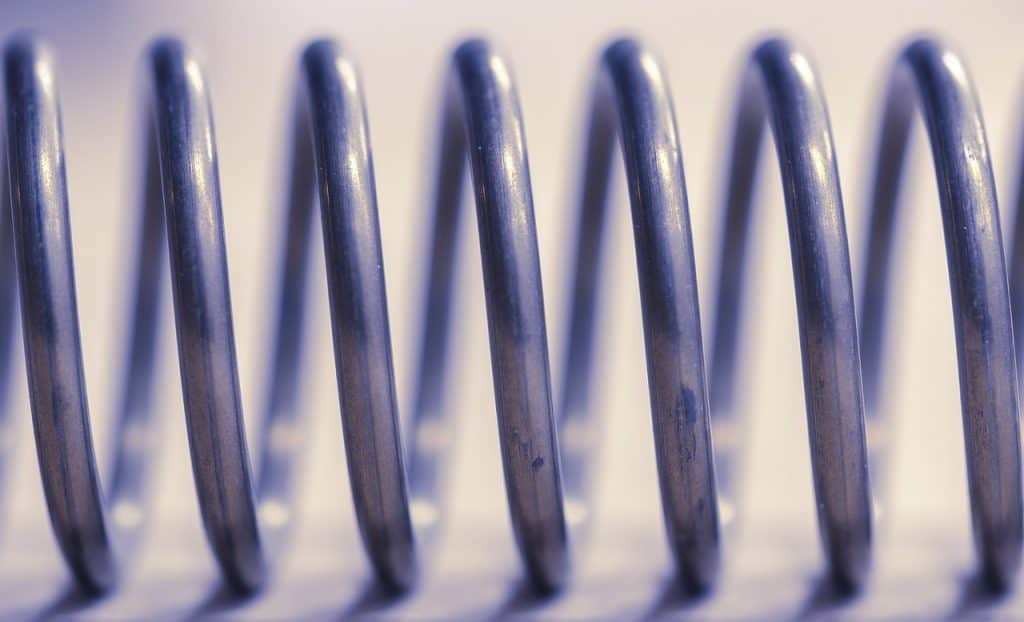
There are a total of six different spring steel types that are often used. Most medieval swords are forged from one of those spring steels. They are well known for their incredible toughness, ductility and fatigue resistance. These high carbon steel alloys got their name, because of their ability to spring back to their normal form even if seriously bent or twisted.
As explained before the first digit represents the type of main material used. The second digit gives the percentage of the main material. The last two digits of the series indicate the carbon concentration. All of the following steel types apply to the SAE numbering system with exception of the 65Mn steel. For quick reference sword of type 1 are carbon steels, type 5 are chromium steels and type 9 are silicon-manganese steels.
Below, you’ll learn more about the six different types of spring steels.
1566
1566 spring steel is a high-carbon and manganese spring steel used by Hanwei in many of their differentially hardened Japanese swords and through-hardened medieval swords. This deep hardening steel provides a consistent microstructure ensuring long life and excellent edge holding.
5160
5160 is a very popular spring steel, mainly used for forging medieval swords and large knives. As all other spring steels, it features high durability. 5160 is a low chromium steel containing around 0.8% chromium. With a chromium content higher than 13% the steel becomes stainless and shatters easily.
A lot of sword makers, such as Legacy Arms (Generation 2) as well as Hanwei Forge use this steel, owing to its great shock absorption. As with all other steels, heat treatment is the most important part. This steel is mostly mono tempered, although it is possible to differentially harden it, which can produce a hard edge section and a softer core.
5166
This steel is very similar to the one before. The main difference is that 5166 spring steel has a manganese alloying agent giving it some extra strength and flexibility beyond 5160. For people that tend to use their swords a lot the extra durability might pay off. The blade is also a bit harder as the carbon content is 0.66%.
52100
52100 offers the perfect combination of hardness and toughness. Provided that the sword steel is correctly heat treated. Sword wholesalers tend to stay away from this steel as the heat treatment for this steel is rather complicated. Therefore, mostly custom sword makers use this steel type.
9260
This spring steel contains 2% silicon. That fact makes it very robust and extremely resistant to bends. Swords forged from this steel spring back true even if bent almost to 90 degrees.
9260 steel swords are extremely durable. Their durability can only be surpassed by tool steels (which are extremely pricy). Generally speaking, 9260 steel swords offer the best price-performance ratio. Keep in mind that even those swords aren’t indestructible!
65Mn
65Mn steel is a Chinese steel, which provides good durability in combination with hardness. The medium to high carbon steel makes the blade quite tough. Whereas the manganese additionally improves all the properties of the blade.
Another nice effect of the manganese is that tempering the blade becomes easier. Consequently, blades forged from this steel aren’t as expensive. Even though 65Mn is a spring steel it is mainly used for machetes, daggers and differentially tempered katanas.
Tool Steels
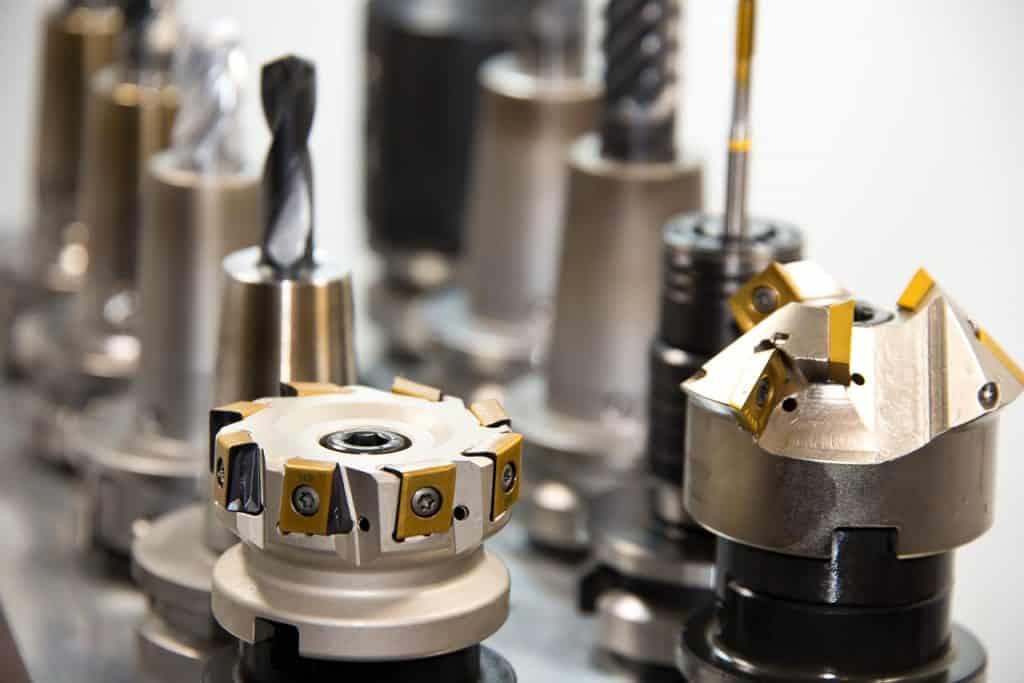
Tools steels are becoming more and more important in the sword industry. The swords forged from these steels are very hard, keep a very sharp edge and are extremely durable.
Tool steel is the most desirable steel for sword blades, as they withstand significant pressures. They are made to resist repeated impacts without losing their endurance characteristics. The L6 Bainite and S7 Shock Steel are the best steels available overall.
Below you will find the three main types of tool steels.
T-10
The “T” indicates that this steel is a High-Speed steel with a Tungsten Base. High-Speed tool steels include tungsten (t1 to t15) and the molybdenum (M1 to M52) steel alloys.
One characteristic of this steel is that it can be hardened up to 67HRc. The number “10” signals that the carbon content of the steel is 10 times 0.1%. This results in a carbon quantity of 1% for the T-10 tool steel.
You might assume this tool steel is similar to a 1095 high carbon steel. However, T-10 is even stronger and has way more durability than a sword forged from 1095 steel. But as with all high carbon steels they have a very low resistance to corrosion, which makes proper sword maintenance very important.
Their advantages come at a price. Good and correctly tempered T-10 steel swords are very expensive. T-10 steels swords start at a price of about 600€.
L6 BAINITE
L6 Bainite is a tool steel. The “L” signifies that it is a low alloy steel. A properly heat treated Bainite steel sword has the reputation of being the toughest type of sword steel available on the market. The forging process of this steel is rather complicated.
Here is a quick and easy overview. L6 steel is heated a few times until it forms Bainite. Bainite is a plate-like microstructure that forms in steels. The Bainite allows the steel to remain way harder and hold its edge longer.
L6 Bainite steel is used in high-end medieval swords, katanas as well as knives. With increasingly better technology and machinery L6 steel is becoming easier to produce. Consequently, becoming cheaper. However, this steel type is still extremely expensive.
You should never buy a L6 Bainite steel sword for under 1000€. In case this seems like a lot (which it actually is), a well-tempered spring steel sword isn’t a bad choice either.
S7 SHOCK STEEL
Besides having many of the characteristics of L6 tool steel, S7 Shock steel is, as the name suggests extremely shock-resistant. S7 Shock steel really can take a beating.
A sword forged from this steel is really rare. Only a few custom sword smiths make use of this material. Even though S7 Shock steel is a slight upgrade from L6 Bainite it certainly is not indestructible!
Hanwei Steels
HWS-1S and HWS-2S steel is proprietary steel made by Hanwei. Information on this steel type is extremely limited. I don’t own any of Hanwei’s katanas forged from those steels. Thus, I can’t give you exact data.
In case any of you got more info on those two sword steel feel free to share it in the comment section below. Be cautious when buying these swords as they are in the price class of more than 800€ and I can’t verify their performance by myself.
HWS-1S
According to the manufacturer, HWS-1S steel offers great edge-holding capability as well as outstanding performance characteristics. Moreover, the blade is said to be very tough and resilient.
HWS-2S
The HWS-2S is said to have similar properties as HWS-1S steel. The main difference is the price. Contrary to the assumption that this steel is more expensive, HWS-2S steel is a bit cheaper. Both steel types seem to be used for differential heat treatment rather frequently, as most of these katanas have a hamon line.
Forging Techniques
Now that you know about steel tempering and the different types of steels let’s move on to the last part of this article. There are some special forging techniques we have to discuss.
Damascus Steel
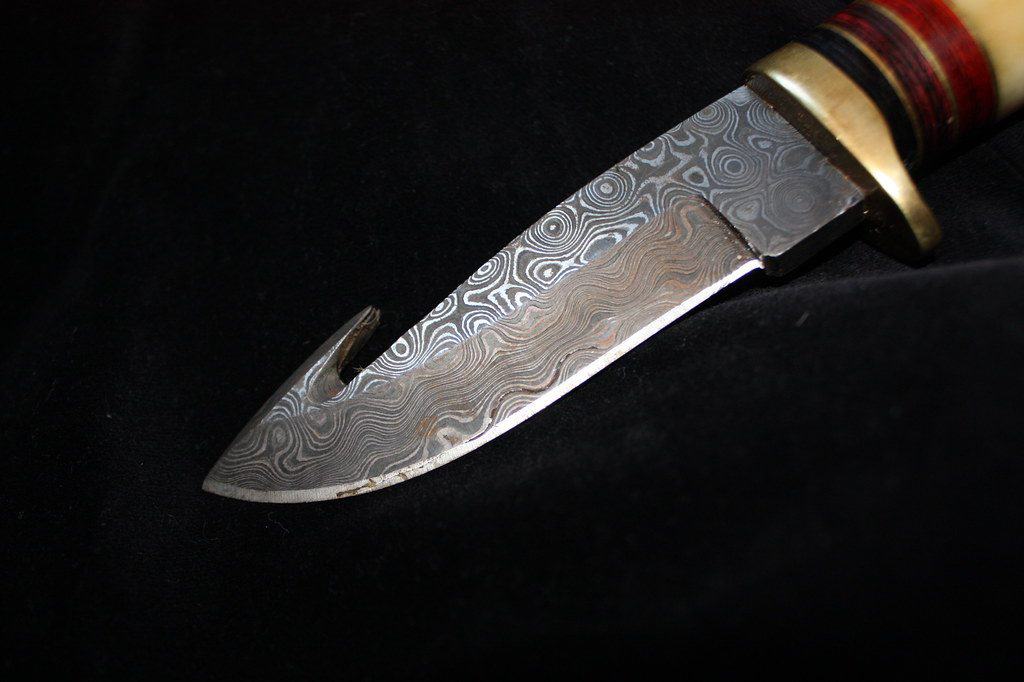
Damascus steel got its name from the capital city of Syria. When polished this steel shows a clear and pretty pattern. The original Damascus steel found its way to Europe during the medieval times. The main material used for forging Damascus steel was called Wootz steel. Unfortunately, the ancient forging technique was lost during the 18. century.
In modern times another technique is used for creating Damascus steel. Nowadays, different steel types called refined steels are used. They are pulverised and afterwards heated to their melting point. Various refined steels are mixed together and under high-pressure form a material similar to Damascus steel.
A few very pricy Japanese katanas are forged from this steel. The result is a great-looking sword with a beautiful pattern on the blade, but often less reliable and weaker.
Folded Steel
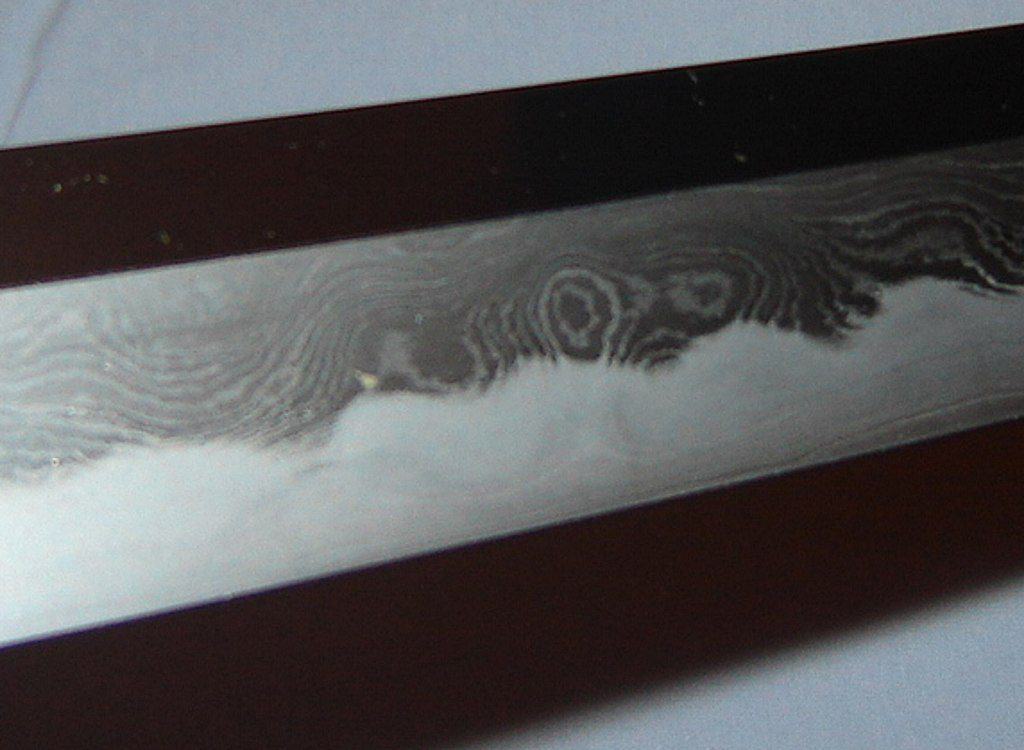
First things first folded steel is not a steel type. Any of the above-discussed steel types can be folded multiple times. This creates lines in the sword’s blade (mostly used in katanas).
A folded steel blade looks really nice. However, if done incorrectly air pockets may form inside the steel, which makes the entire blade really bad. Even a stainless-steel sword is better than a terribly forged folded steel sword. I advise you not to buy a folded steel sword for under 600€.
A quick history lesson why this steel is (and was) so popular for forging katanas. Most iron deposits in Japan only contain iron ore with very high carbon content. The so-called pig iron consists of 4-5% of carbon.
Such a high amount of carbon is not suitable for swords. Therefore, Japanese swordsmiths had to come up with a solution to reduce the carbon content of their iron. The most effective process they could find was folding. During this procedure, the metals are forge welded, folded and welded again.
The folding homogenises the steel and remove impurities. The alternating layers greatly enhance the toughness of the blade. By using this method, the Japanese could forge their katanas from “normal” steel with a carbon content of around 1% (equals a 1095 high carbon steel).
Nowadays all steels used for sword production are already clear from any impurities and have the desired carbon content. Consequently, there is no need for folding steel anymore (was never done in medieval Europe anyway).
So, you might ask yourself the question of why folded steel katanas are so sought after. The only reason is for aesthetic purposes. A folded steel blade just looks way more interesting than a normal sword blade. A folded steel sword is likely to cost more than 1000€.
Conclusion
You now have a great overview of most of the available sword steels and other important aspects of forging a sword. It is best if you decide for yourself what sword steel best suits your usage.
In case you are a total beginner and just want a sword 1045 carbon steel is the way to go. If you have more money to invest and want a great durable blade for a reasonable price 9260 spring steel is a great choice, even for advanced users. In case you are planning to use your sword daily, one of the three available tool steels might be the perfect one for you.
For special needs 1095 high carbon steel offers a great cutting ability, which is a perfect choice for experienced sword wielders wanting to do heavy cutting with their katana.
If you have any further questions feel free to ask them on social media or in the comment field below.